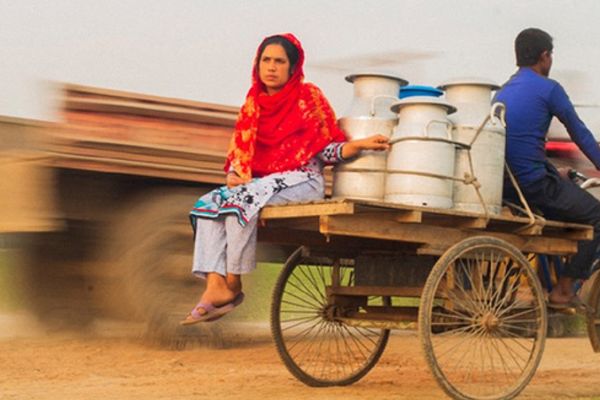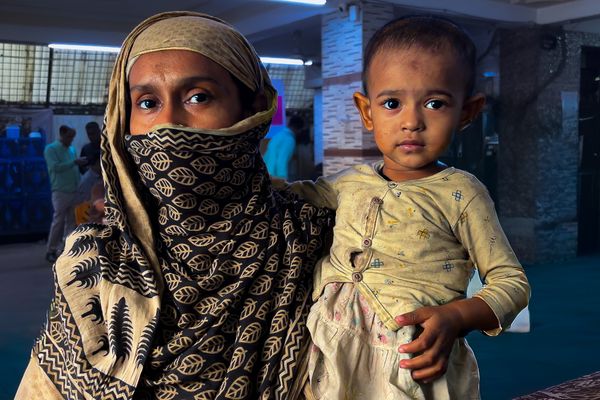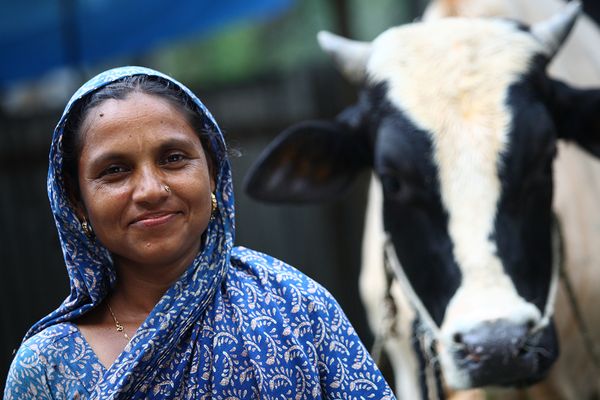Aarong is a renowned Bangladeshi lifestyle store, selling fashion and homewares across the world. It is also one of BRAC’s largest social enterprises, employing 65,000 craftspeople across Bangladesh – 85% of whom are women.
BRAC realized early on that the most disadvantaged groups in rural communities were women. The popular brand began as a means to generate alternate livelihood opportunities, in a country with a long tradition of folk art and crafts. Aarong started by working with women to improve the quality of their silk and intricately hand-stitched nakshi kantha quilts. The only major fair-price handicraft outlet at the time took goods on consignment, which meant that the women were not paid until their products were actually sold. To women who had invested their labor and had borrowed money for materials, this could mean waiting months to be paid, never knowing whether the product would be sold.
Seeing an opportunity to connect the talented women with consumers in urban areas – and to ensure they were paid for their work on time – Aarong was launched in 1978.
Today, we work with tens of thousands of gifted craftspeople across Bangladesh through an extensive support system, which includes free skill development and access to BRAC’s multifaceted development programs. All of our mostly single-storey production centers are safe, nurturing spaces in rural areas that provide holistic support to artisans, including access to day care centers, healthcare and schools for working mothers and retirement benefits for senior workers. In addition to employing artisans, we source products from a wide range of cottage, micro, small and medium craft enterprises in rural areas, ensuring a steady source of orders for them. All this demand for craft, and the fusing of folk techniques with modern trends, has meant that traditional crafts, such as the fine handwoven Jamdani and the vibrant hand stitched nakshi kantha continue to be centerpieces in homes and worn on the red carpet at festivals today.
Aarong began with the goal of connecting women in rural areas with ways to generate income and stays true to it today. But the scale of this social enterprise has also proven that you can build a multi-million-dollar fashion brand at the same time.
Another solution at scale can be seen in our skills development program, which pairs apprentices directly with master craftspeople, innovating on the traditional informal apprenticeship model that has existed predominantly for men in South Asia for thousands of years. The model is significantly cheaper than costly training institutions, and this model is significantly quicker - apprentices begin working after just six months of training. Apprentices are taught what a decent job is so they can negotiate pay, worker rights, and standard conditions when they find employment, which is often with the master craftsperson who trained them. To ensure that good working conditions are available, master craftspeople are also trained - on topics such as gender rights and occupational health and safety. Women and men pursue the same trades, breaking gender stereotypes and increasing the participation of women in the labor economy.
The program has reduced early marriage and substantially increased incomes. Approximately 95% of graduates are employed upon completion of the program. They are employed in the informal and formal sectors or start their own businesses.
Small is beautiful, but big is necessary for systemic change, and partnerships are needed when it comes to changing norms that have held people back for generations.



